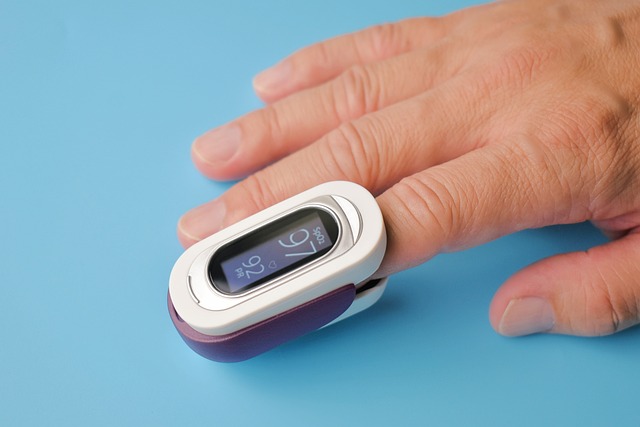Rusty Van Sickle considers herself one of the lucky ones.
A victim of two massive strokes in 1993, one of which left her in a three-week coma, the Florida resident has, in her words, “come back.” She’s at the point where, with some accommodations, she can hold down a job in her field of social work.
“I can drive now,” says Van Sickle, 43. “I cook and do home chores. I do many of the things I used to do.” But, she adds, hinting at the long road she’s had to recovery, “I’ve had to relearn all of them.”
She has lingering effects such as a lack of visual sharpness and skewed spatial judgment. Paralysis on the left side of her body and damage to her brain’s balance center keep her confined to a wheelchair most of the time.
But she keeps a positive outlook and admits that her stroke was “not really that bad when you compare it with what others have been through.”
Stroke ranks as the third leading killer in the United States, behind heart disease and cancer. More than a half million Americans have a stroke each year, according to the National Institute of Neurological Disorders and Stroke (NINDS). Following a 25-year decline, stroke deaths are now on an upswing. Figures from the American Heart Association show that 158,061 Americans died of stroke in 1995, the latest year for which statistics are available–a 10 percent jump over the 143,769 deaths in 1992.
Some professionals have explanations. “The increase in stroke deaths is linked to the aging of the population and may also be the result of a decrease in the detection and treatment of high blood pressure,” says Russell Luepker, M.D., director of epidemiology at the University of Minnesota. He adds that high blood pressure is one of the primary risk factors for stroke, and that about one-third of the Americans who have it are unaware.
Stroke also is the most common cause of adult disability. “Millions of people are challenged by the devastating aftermath of stroke,” says Jan Breslow, M.D., president of the American Heart Association, adding that up to one-third of stroke survivors need help caring for themselves, 20 percent need help walking, and 70 percent are not able to perform the same job tasks they did before the stroke.
Amid these grim statistics, however, hope is emerging that the devastating effects of stroke can be lessened, possibly reversed, in many cases. Activase (alteplase), a genetically engineered version of the body’s own tissue plasminogen activator (t-PA) that can dissolve clots, was approved by the Food and Drug Administration in 1996 for treating the most common type of stroke. It had been approved earlier for treating heart attacks. In clinical trials, Activase boosted recovery odds significantly in selected stroke patients treated within the first three hours of the onset of symptoms.
FDA also has approved the anticoagulant drug Coumadin (warfarin) for treating patients at high risk of having a stroke, such as those with a heart valve defect or who have suffered a heart attack. Doctors also prescribe low-dose aspirin to their patients who have had previous heart attacks or strokes because studies have shown that aspirin can prevent repeat heart attacks and strokes in these patients. Aspirin is an “antiplatelet” that can prevent the “clumping” of blood platelets that creates clots and triggers heart attacks and strokes. Last November, FDA approved another antiplatelet drug for treating stroke, Plavix (clopidogrel), and for several years, doctors have prescribed the drug Ticlid (ticlopidine hydrochloride), also approved as an antiplatelet.
Several drug treatments, including one designed to stop the rapid death of brain cells following a stroke, are in clinical trials now. Also under study is a spring-like device used to prop open blood vessels after blockages are removed, a therapy that may reduce the chance of stroke.
Medical professionals emphasize that there are at least five risk factors that, when treated, can decrease the possibility of stroke. Knowing stroke’s warning signs and seeking emergency help immediately if they appear can reduce the risk of death or disability significantly.
What Is a Stroke?
Sometimes called a “brain attack,” a stroke occurs when blood circulation to the brain fails. This cuts off oxygen and can kill brain cells, affecting neurological functions such as speech, vision, coordination, and thought.
Strokes fall into two broad categories: those caused by blood-flow blockage and those caused by bleeding. An ischemic stroke, which occurs when a blood vessel in the brain or neck is blocked, is the most common stroke, responsible for about 80 percent of cases. Such blockages may form within a blood vessel of the brain or neck (thrombosis), may migrate to the brain or neck as a clot from another part of the body (embolism), or may result from severe narrowing of an artery in or leading to the brain (stenosis).
Less common is hemorrhagic stroke, in which a blood vessel bursts, causing bleeding into the brain or in the spaces surrounding the brain.
Stroke is an equal threat to men and women. It occurs in all age groups and races, though African-Americans suffer more severe strokes and have a death rate nearly double that of whites. Scientists have identified a “stroke belt” in the Southeastern states, especially in the coastal plain areas of the Carolinas and Georgia. A study in the May 1997 issue of the journal Stroke showed that stroke deaths in this Southern region are more than double those of the nation overall in ages 35 to 54. For ages 55 to 74, deaths in the belt are 1.7 times greater. Why? “It could be a wide range of things,” says George Howard, professor of epidemiology at Bowman Gray School of Medicine in Winston-Salem, N.C., and lead author of the Stroke study. He says possible factors include the region’s lifestyle choices such as smoking more or eating more fat and salt.
Though most strokes occur in adults over 40, children also have strokes, though these are typically caused by underlying conditions such as congenital heart disease or sickle cell anemia.
Sometimes young adults between 20 and 40 fall victim. Bill McGarry was a 22-year-old engineer in 1977 when a stroke plunged him into a three-month coma on advanced life-support machines. More than 20 years later, he still has paralysis, blindness, and nagging problems such as greatly reduced mathematical and analytical abilities. Speech therapy allowed him to regain control of his vocal cords. In 1989, he received a master of education degree from the University of New Orleans and began working as a career counselor in 1990. He now lives independently in his own home in Austin, Texas.
The key to this kind of recovery, he says, is to stay focused on getting better and to not lose faith when rehabilitation reaches a plateau. Support from family and friends also is crucial. “Improvement is almost glacial at times,” he says. “But it adds up … a step here and a second there and eventually you can walk across the room or down to the corner.”
Turning the Tide
While strokes like McGarry’s continue to cause devastating effects, new treatments now offer the potential for reversing or lessening stroke effects. The conclusion of a December 1996 symposium sponsored by NINDS that brought together experts from medical centers nationwide was that stroke is always a medical emergency. To survive or recover from it requires immediate care and effective responses from everyone in the “chain of care”: medical technicians, emergency departments, and doctors. Public education also is crucial so stroke victims and those around them will recognize stroke symptoms and seek help quickly.
Before 1995, the medical community viewed stroke mainly as an “unfortunate medical problem requiring only supportive care and monitoring,” writes Paul E. Pepe, M.D., of Pittsburgh’s Allegheny General Hospital, in an overview of the NINDS symposium. Unless a patient had passed out or was having trouble breathing, the case often was not handled urgently.
Now the stroke-care landscape is changing–albeit slowly–as more emergency rooms adopt policies of treating appropriate stroke patients with the bioengineered clot-dissolving drug Activase. In a dramatic five-year clinical trial sponsored by the National Institutes of Health and concluded in 1995, 624 patients received either intravenous Activase or a placebo within three hours of stroke symptoms’ onset. The result was that 11 percent more of the Activase-treated patients had few or no signs of disability compared to the placebo group.
“One of the keys to the success of [the NIH study] was treating stroke as the true emergency that it is,” says Thomas Brott, M.D., clinical investigator at the University of Cincinnati Medical Center, one of the study sites. “The concept that stroke is every bit as serious as heart attack is one that physicians must recognize in order for this new treatment to have widespread benefit.”
Activase is indicated only for treating ischemic strokes. So before the drug is used, medical professionals must rule out hemorrhagic stroke by various tests, including a computerized axial tomography (CT) scan, which can indicate hemorrhages through sectional views of the brain.
Despite Activase’s promise, it has been slow to catch on as a stroke treatment. In a November 1997 American Heart Association conference, researchers presented findings estimating that of 200,000 stroke patients who might have benefited from the drug, only 6,000 received it. Though some of these patients reached the emergency room too late to get the drug, others were not treated because emergency personnel were not trained or prepared to administer it, the researchers say.
Another drug, Coumadin (warfarin), can cut in half the 80,000 strokes that occur each year due to the rapid and erratic heartbeat condition called atrial fibrillation. But it too is underused, according to a study by the Agency for Health Care Policy and Research (AHCPR). Atrial fibrillation makes people more prone to form blood clots in the heart that can lodge in the brain and cause strokes. Though Coumadin can thin blood and keep clots from forming, only a quarter of atrial fibrillation patients undergo the therapy. AHCPR researchers say 50 to 75 percent of all atrial fibrillation patients over 60 should receive this blood-thinning therapy.
AHCPR also has reported on carotid endarterectomy, a surgical procedure that removes fatty plaque from the arteries that carry blood from the heart to the brain. Because carotid artery blockage is a major cause of stroke, the surgery can be beneficial and cost-effective for patients with stroke-related symptoms and a high-degree of blockage. But AHCPR stresses that surgery benefits diminish when applied to patients without symptoms but with known blockages. Identifying blockages in asymptomatic patients can involve expensive and invasive diagnostic methods such as angiography, which carries its own risk of stroke and other complications. For that reason, AHCPR does not advocate large-scale screening of asymptomatic people.
Though stroke occurrence overall is on a slight upswing, there’s reason to be hopeful. Medical professionals say it is unlikely that stroke will ever be eliminated completely. But medical weapons such as Activase and Coumadin hold promise to at least help curb the disorder’s destructive path.
Heed Stroke’s Warning Signs
From the onset of stroke symptoms, time is precious. Getting emergency help within three hours can mean the difference between severe brain damage and full or partial recovery.
If you have any of the following warning signs, call, or have someone call, 911 immediately:
- sudden weakness or numbness in the face, arm or leg
- sudden dimness or loss of vision, particularly in one eye
- sudden difficulty speaking or understanding speech
- sudden severe headache with no known cause
- unexplained dizziness, unsteadiness, or sudden falls, especially in conjunction with the other warning signs.
Occasionally, strokes cause double vision, drowsiness, nausea, or vomiting. Also, because warning signs sometimes may last only a few minutes and disappear, it may be tempting to ignore them. But these “mini-strokes,” or transient ischemic attacks (TIAs), could be your body’s warning of a future full-blown stroke. So even if the symptoms go away quickly, seek medical help right away.
Control Stroke Risk Factors
The National Institute of Neurological Disorders and Stroke has identified five treatable risk factors associated with stroke. Agency officials emphasize that having a risk factor doesn’t mean you’ll have a stroke. And not having a risk factor doesn’t mean you’ll avoid a stroke. But your likelihood of having a stroke grows as the number and severity of risk factors increase. Risk factors that can be controlled by medical treatment include:
- High blood pressure. This is by far the most important risk factor. Have your blood pressure checked by a qualified professional, and if it is high, seek medical attention to bring it into the normal range. Some over-the-counter (OTC) drugs may cause high blood pressure. For example, phenylpropanolamine (PPA), a widely used ingredient in OTC cough, cold, and weight-loss drugs, is under review because of concerns that the compound, especially in doses beyond those recommended, may elevate blood pressure and increase the risk of stroke. The Nonprescription Drug Manufacturers Association, at FDA’s request, is sponsoring a study of PPA in OTC drugs and its possible relationship to an increased risk of stroke.
- Cigarette smoking. Studies have linked smoking to the buildup of fatty substances in the carotid artery, the main neck artery supplying blood to the brain. Blockage of this artery is the main cause of strokes in Americans. Nicotine in cigarettes can raise blood pressure, and smoke can make blood thicker and more likely to clot.
- Heart disease. Disorders such as coronary artery disease, valve defects, irregular heartbeat, and enlargement of one of the heart’s chambers can create clots that may break loose and cause a stroke. Regular physicals will pinpoint treatable problems.
- History of stroke. If you experience a “mini-stroke,” or transient ischemic attack (TIA), with symptoms that quickly subside, seek emergency help. If you have had a stroke, consult with your doctor about what you can do to avoid a second stroke.
- Diabetes. This causes destructive changes in blood vessels throughout the body, including the brain. If blood glucose levels are high at the time of a stroke, brain damage is usually more severe than when glucose is well controlled. Treating diabetes can delay complications that increase stroke risk.
For More Information
These organizations have information on stroke prevention, treatment and rehabilitation.
American Heart Association
7272 Greenville Ave.
Dallas, TX 75231
1-800-242-8721
http://www.americanheart.org/
Agency for Health Care Policy and Research
P.O. Box 8547
Silver Spring, MD 20907
1-800-358-9295
http://www.ahcpr.gov/
National Institute of Neurological Disorders and Stroke
Office of Science and Health Reports
P.O. Box 5801
Bethesda, MD 20824
1-800-352-9424
http://www.ninds.nih.gov/
National Rehabilitation Information Center
8455 Colesville Road, Suite 935
Silver Spring, MD 20910-3319
1-800-346-2742
http://www.cais.net/naric/
National Stroke Association
96 Inverness Drive, E., Suite One
Englewood, CO 80112-5112
1-800-787-6537
http://www.stroke.org/
Image by ai Subarasiki from Pixabay.







